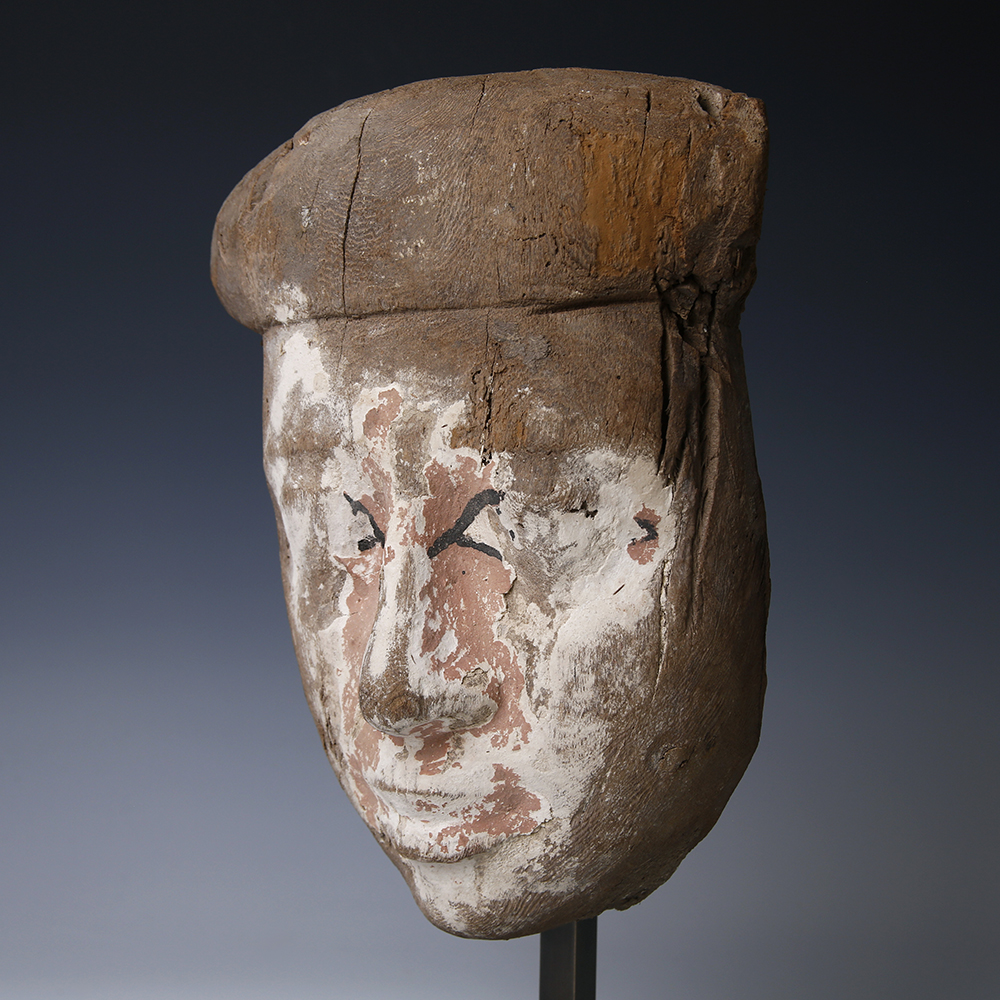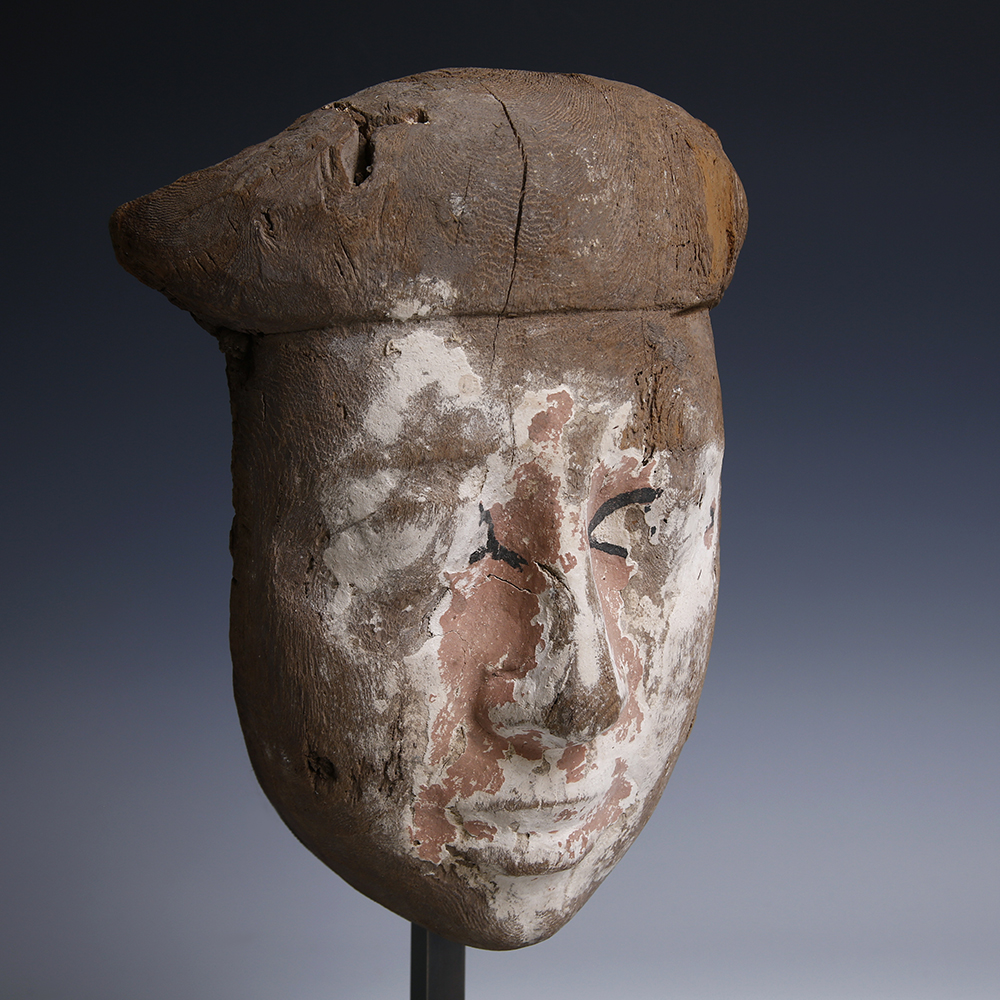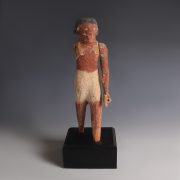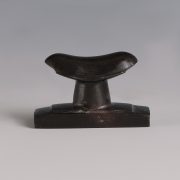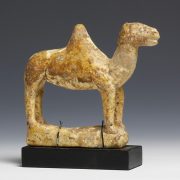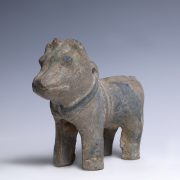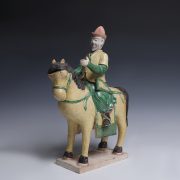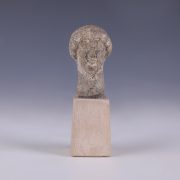The protection of the body after death was of pivotal importance in Ancient Egyptian religion, as a well-preserved body was necessary to enter the afterlife. Though, in addition to protection, sarcophagi served an important religious and symbolic function through their shape and design, which changed and evolved over the history of Ancient Egypt. In their earliest history, sarcophagi were considered the eternal dwelling of the deceased; they were usually undecorated or, later, inscribed with simple offering formulas, wadjet eyes and images of a ‘false door’. As the nature of the afterlife changed around the end of the Middle Kingdom, these simple sarcophagi were replaced by intricate anthropoid coffins. These were dressed with a headdress, collar and often a false-beard, reflecting an Osiride image of the deceased.
Ancient Egyptian Wooden Sarcophagus Mask
$1,865.93
An exceptional Ancient Egyptian wooden sarcophagus mask showing the frontal view of an idealised face. Though they seldom portrayed a true portrait of the deceased, funerary masks were an essential component of the mummy, providing a visual representation of the deceased during their journey through the afterlife.
This fine piece depicts the facial features of a young male individual. His traits are rendered with great sensitivity, particularly his slightly arched eyebrows, the slender nose and plump lips raised in a faint smile. Heavy eyelids shape his solemn eyes which preserve some detailing to the dark pupils. Part of a rounded headdress sits low on the forehead. The mask is carved from a single wood core and overlaid with a thin layer of gesso, a combination of chalk and glue often used in woodworking to provide a smooth painting surface. In this piece, the fragmentary gesso displays exceptional retention of the original pigmentation, with red tones used to render the skin, white for eyes, and black for the eye contour. The rear of the face reveals this piece had been carved separately and fixed onto its sarcophagus lid. Five sockets are arranged in a U-shape on the perimeter, three retaining fragments of the wooden pins which would have integrated the face in the overall design of the coffin.
Period: New Kingdom Period
Provenance: From a London collection formed before 1990s.
Condition: Fine condition. Some splits to the wood.
SOLD
| Weight | 1635.5 g |
|---|---|
| Dimensions | L 19 x H 34.9 cm |
| Culture | |
| Region | |
| Material |


